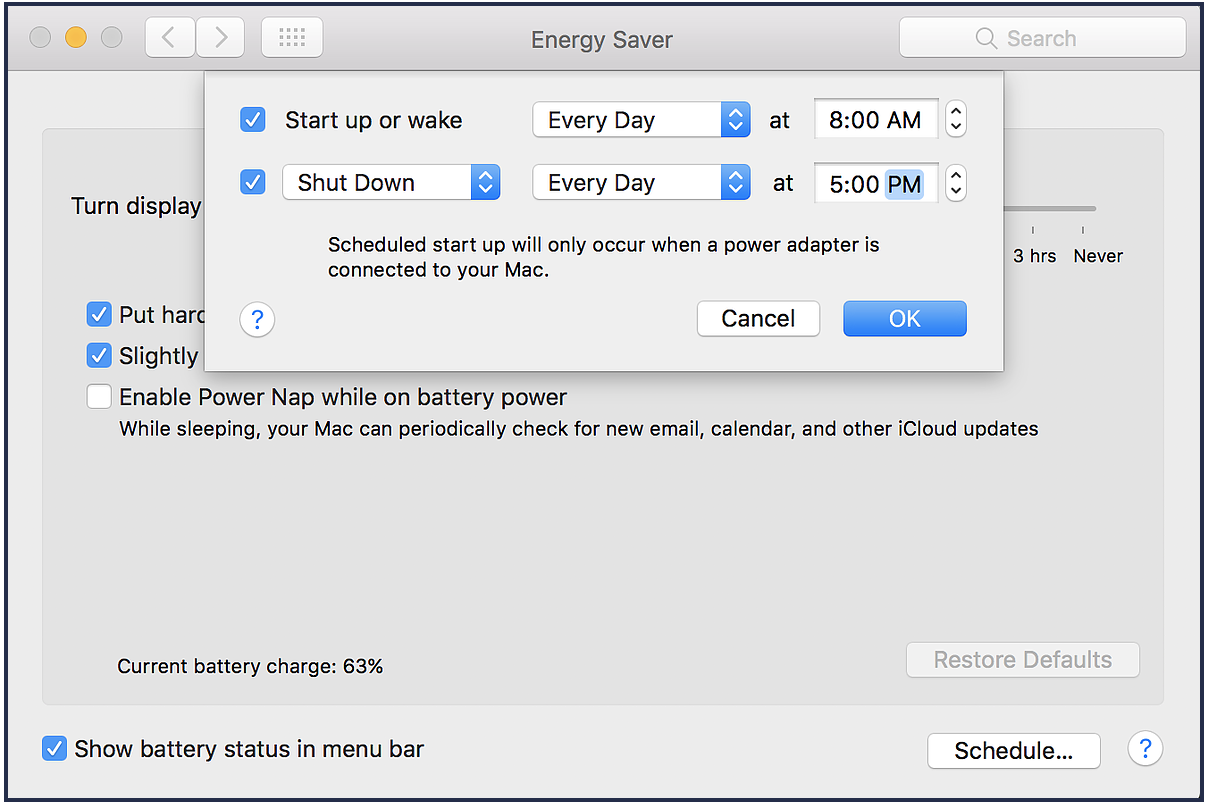By activating your computer's sleep mode settings, you can decrease your energy costs by up to $35 a year! Furthermore, if you adjust all of the power management features on your device, you could save an additional $65 in electricity costs! Below are some power management strategies that can help you save money and the environment.
Note: If you need the activation instructions for a different device, ENERGY STAR offers a comprehensive power management guide for most major computer brands.
Turn Down Your Display Brightness
Keep your screen's brightness as low as you can without detrimentally affecting your visibility. This will extend your battery life and reduce the amount of electricity that your computer uses.
On many devices, the keyboard shortcuts are the easiest way to manually adjust your display's brightness. These keys make it easy to adjust the brightness of your display without needing to pause your work. Most modern computers and laptops have brightness keys with a sun icon on the top row of the keyboard on the function bar.

If your device does not have these keys, go to your settings (Mac: System Preferences) and select displays settings. This might be called slightly different things on different devices. On some computers, it might be under a brightness category or you might have to press physical buttons on the monitor. If you cannot figure out where your brightness settings are, research your specific computer brand or, if you are in an office setting, contact tech support.
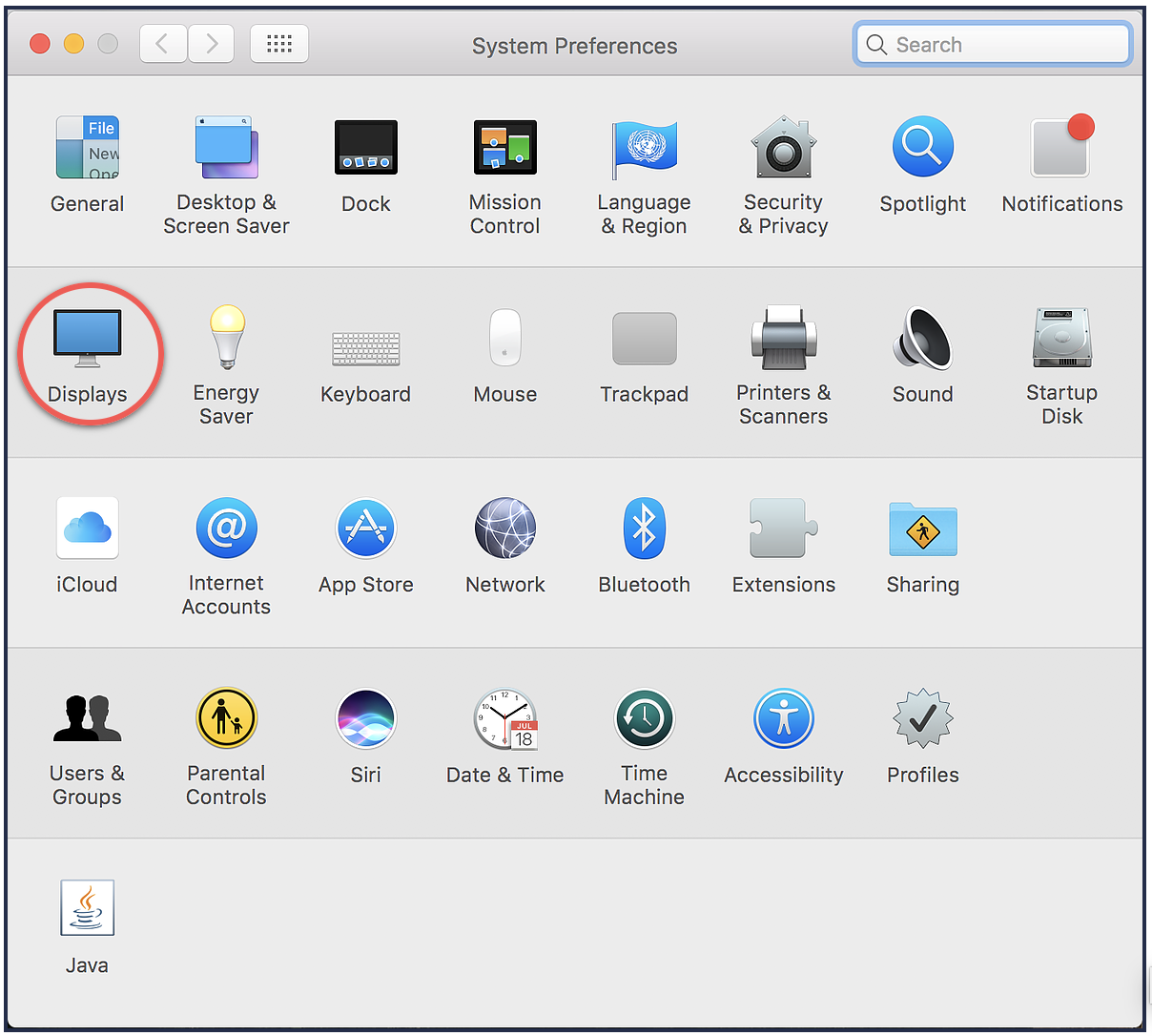
The following recommendations will help you optimize your energy usage using the Displays settings.
Note: Most devices will have slightly different energy saving options under the Displays settings. All of the following recommendations will be relatively generic, but if there are any major differences on your device, contact us or your computer company for more information.
- Lower the brightness as much as you can without sacrificing your visibility. This will extend your computer's battery life and lower its electricity consumption.
- If your device has an option for automatically adjusting brightness, you should use it if you do not like to manually adjust power or you like to keep your brightness relatively high. The option will attempt to optimize visibility and energy savings based on surrounding light. For most people, this will increase efficiency. However, if you already keep your brightness relatively low, you might be more efficient than the automatic settings.
Keyboard Brightness
If your device has a keyboard light, only use it when you are typing in the dark and, even then, keep it on the lowest possible settings. Similar to display brightness, the easiest way to adjust the backlight brightness is to use the keyboard shortcuts which lower and raise the brightness. If your device has these keys, they will most likely be in the function bar at the top of the keyboard (example shown below).
Although most Apple devices have keyboard backlight keys, they are less common with other brands. If you have a keyboard backlight, but do not have the shortcut keys, you can always adjust the keyboard brightness using your keyboard settings. The keyboard settings also offer many energy saving opportunities. Following are directions on how to most effectively use these settings.
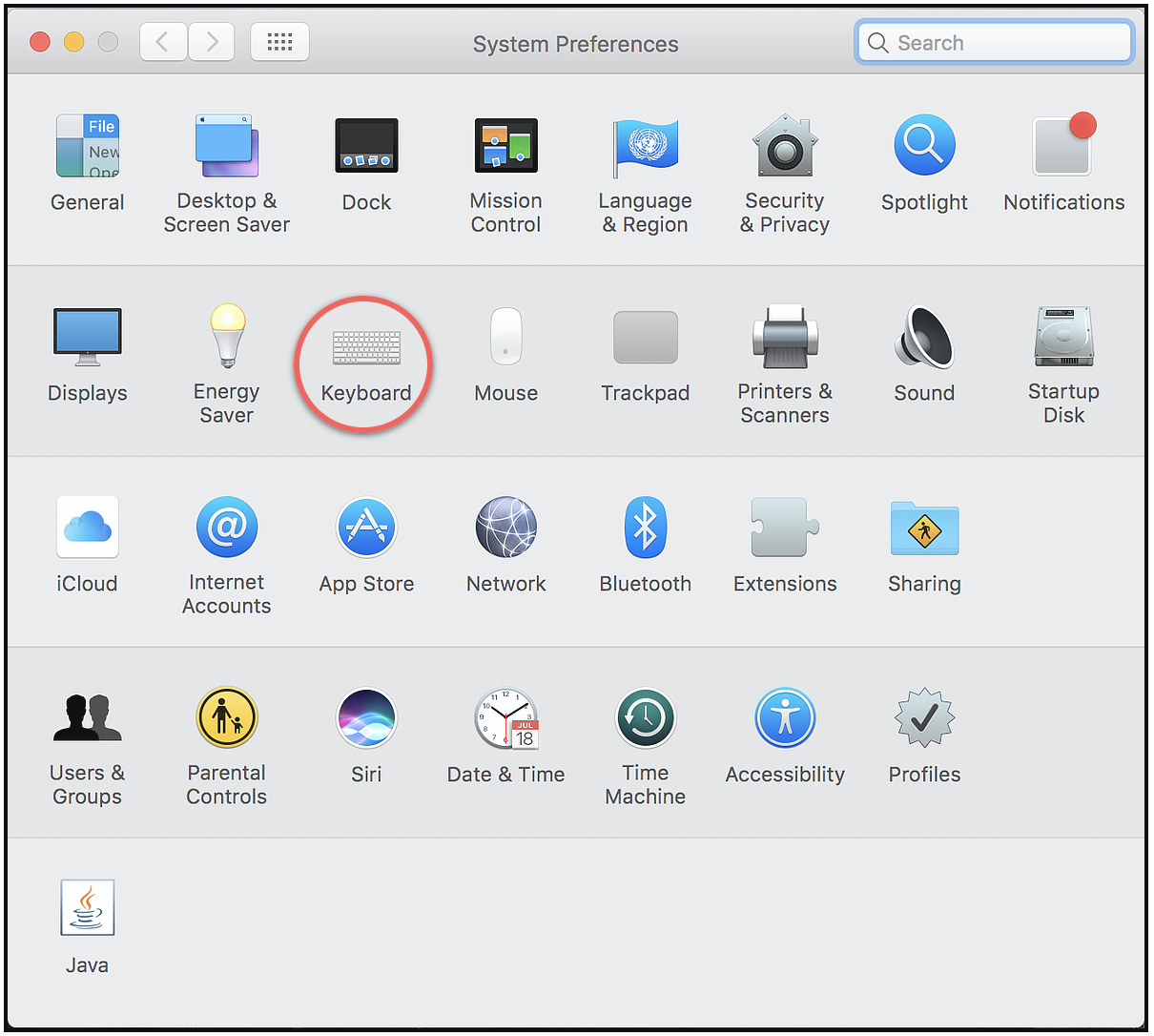
- Turn off your keyboard backlight unless you absolutely need it. Generally, it will not make a difference in visibility.
- If your computer has the option to automatically adjust keyboard brightness in low light, you will usually want to turn it off because, on most devices, you will never need more than the lowest setting and the automatic adjustments will make it unnecessarily bright.
- If your computer offers the option to turn the keyboard backlight off after a certain amount of time, you should almost always select that option. As with most of the Energy Saving settings, choosing the most conservative timing possible will have the greatest effect. Set the time as quick as you can without it affecting your efficiency. In most cases, it is probably better for you to have your backlight turn off when you are not using it, but like all of these suggestions, preferences will vary by person.
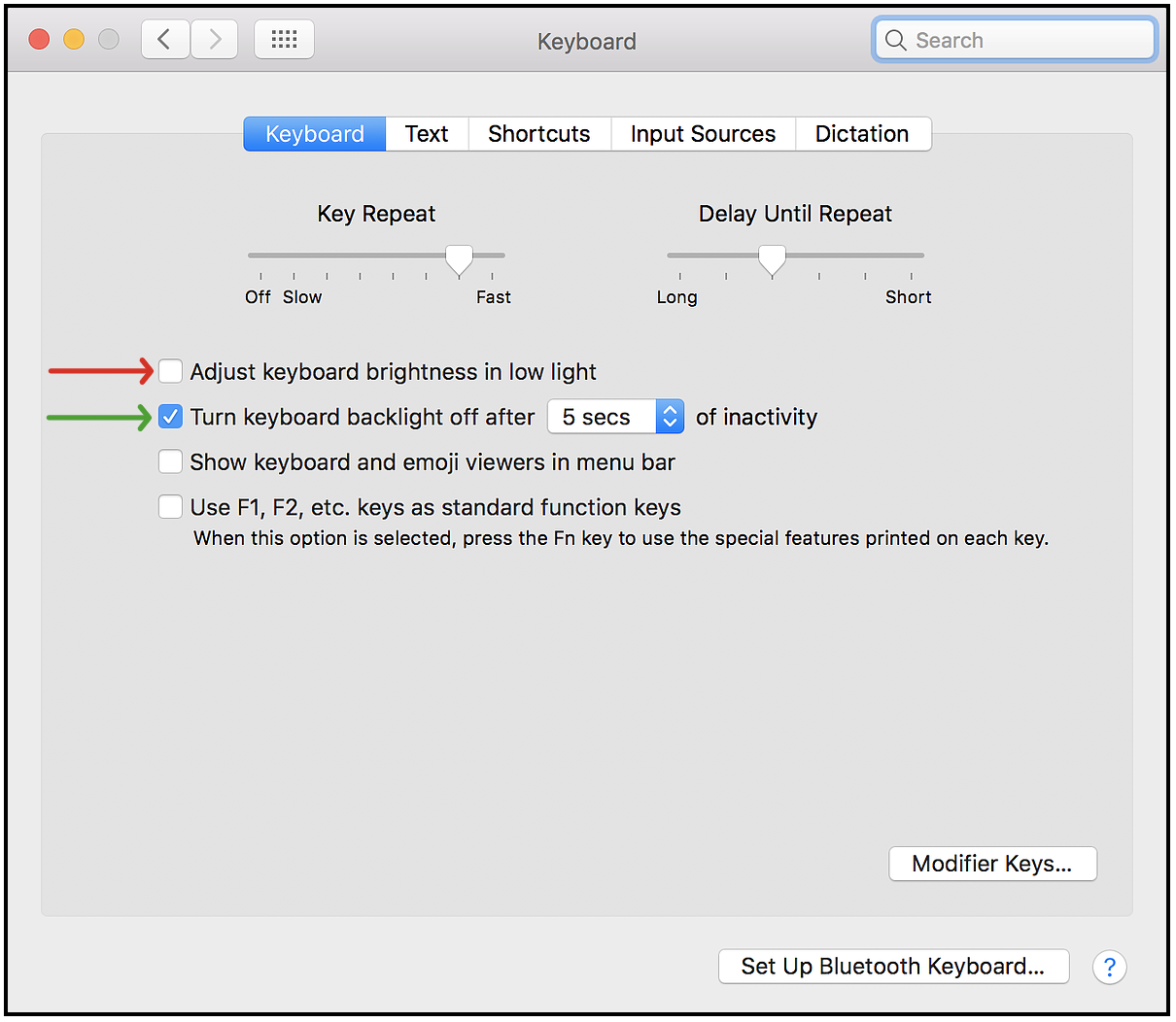
Sleep Settings
On many computer brands, sleep settings will be under either the Display or power settings category. If you have a Mac product, sleep preferences will be under the "Energy Saver" settings found in your Systems Preferences dock. If you cannot find the sleep settings, search in settings for "sleep" or "power."
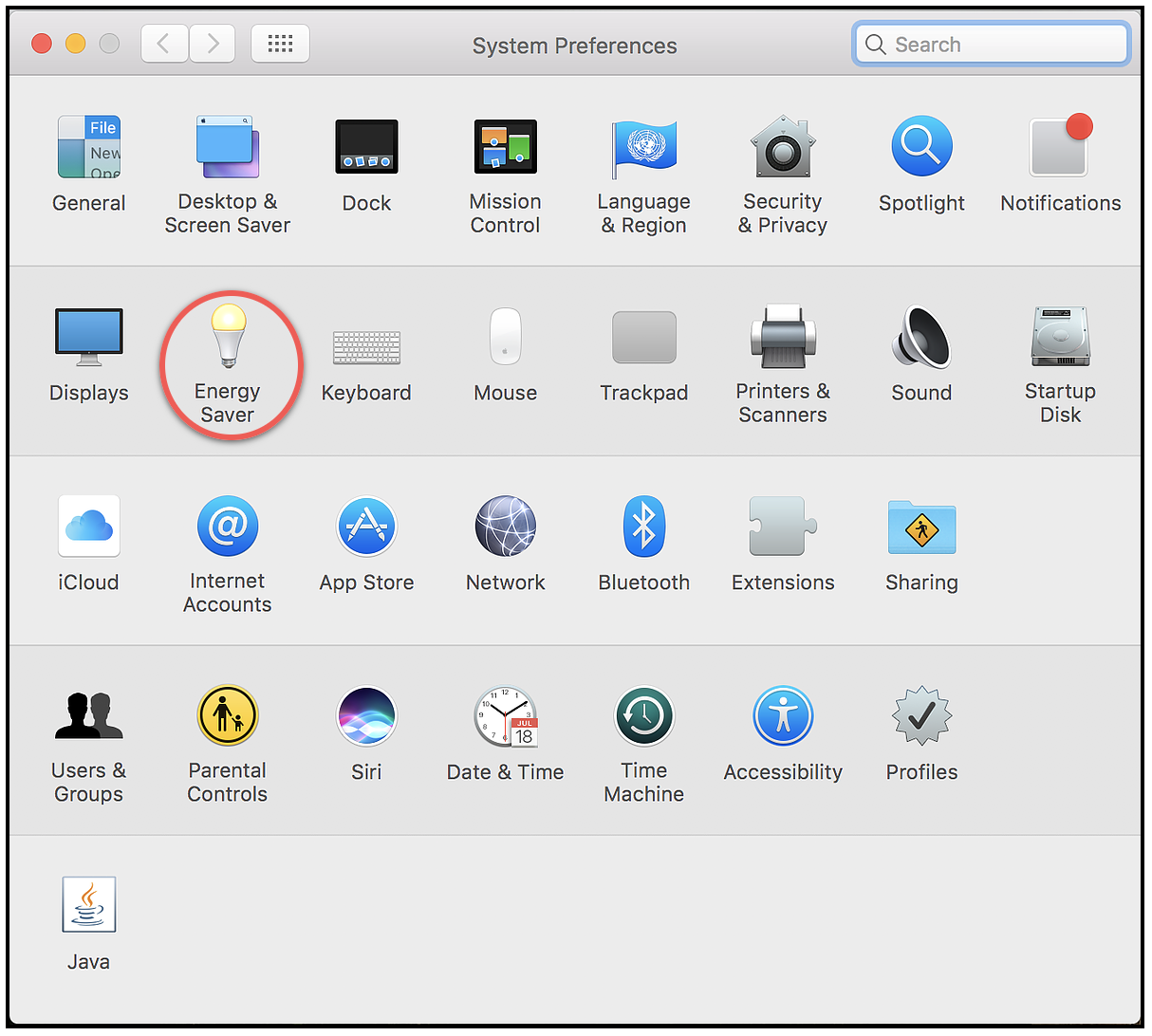
For all of the sleep settings, it is best to set the time to the shortest time possible that does not affect your productivity. The default settings are generally a good place to start. If you are rarely bothered by your computer falling asleep while you are using it, then you can make the time a little shorter.
Many computers will also have an option to put the hard disk to sleep when possible. If you have an SSD drive (most new laptops do), this option will not have any significant impact on your computer sleep patterns. Therefore, it cannot hurt to select it.
If you computer has an option to dim the display while on battery power, you should check it. Most likely, you will not notice the difference, but it will have a slight affect on your device's power consumption.
You may have a Power Nap feature. If you are choosing not to put your laptop in sleep mode because you want to receive new alerts and updates, select this option. Otherwise, it is best to deselect it.
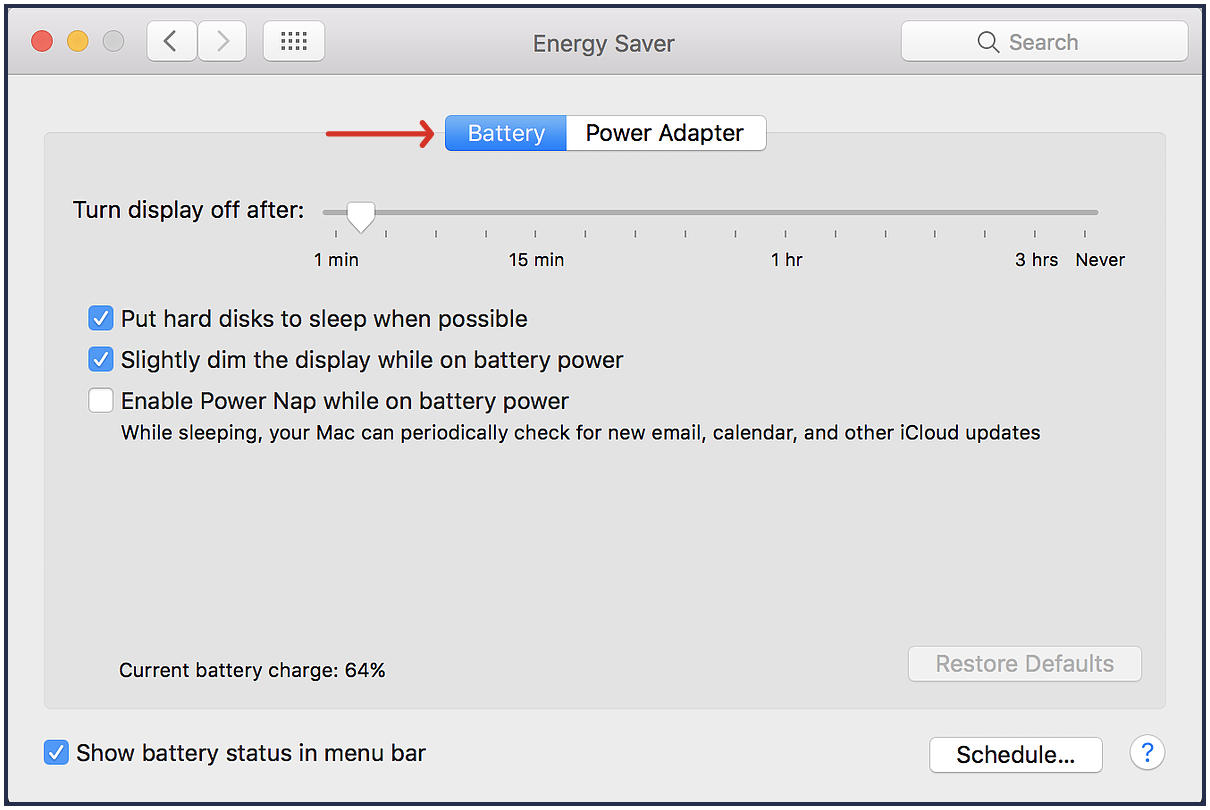
If you are updating the power settings on your laptop. you may have different sleep settings for when it is charging and when it is running on battery. The default settings are a good place to start, but as with the brightness, it is best that this is set as conservatively as possible without impacting performance.
On some computers' charging settings, there is an option to prevent your display from sleeping automatically whenever the display is off. If this is the case, do not select this option. In fact, if you try to select it on a Mac, you will receive a pop-up notification that asks if you would rather restore the defaults.
A setting for "Wake for Wi-Fi access" will turn on the laptop if someone uses a shared peripheral (for example a printer) that is connected to the network as your device. If this applies to you, feel free to check it. If it does not apply to you, deselect this option.
Setting a Shutdown Schedule
Many modern devices have an option to schedule wake and sleep times for your devices. These features are very helpful if use your device for a relatively regular period of time each day (ex: work computers for 9-5 jobs). It will increase productivity since you will not need to waste time turning on your device in the morning or off at night. Additionally, everyone should schedule to turn off their personal devices for at least a few hours at night. It will ensure that your devices, like desktops, that do not automatically shut off will not waste power throughout the night and gives your computer a chance to reboot, likely improving its performance. Of course, if you are using your device or want to turn it on before the scheduled start up, you will be able to manually override the shutdown time.
On a Mac, to turn on a scheduled shut down, sleep, or restart, click the Schedule... button in the bottom right of the Energy Saver window. A drop-down window, like the one in the image below, will appear. To use the scheduler click the check boxes next to the start up and/or sleep options to turn them on. Then, adjust the settings to fit your personal preferences. It is best to shut down your computer at the specified ending time, rather than just having it go to sleep.
